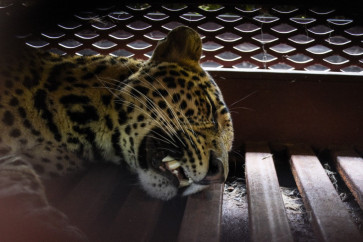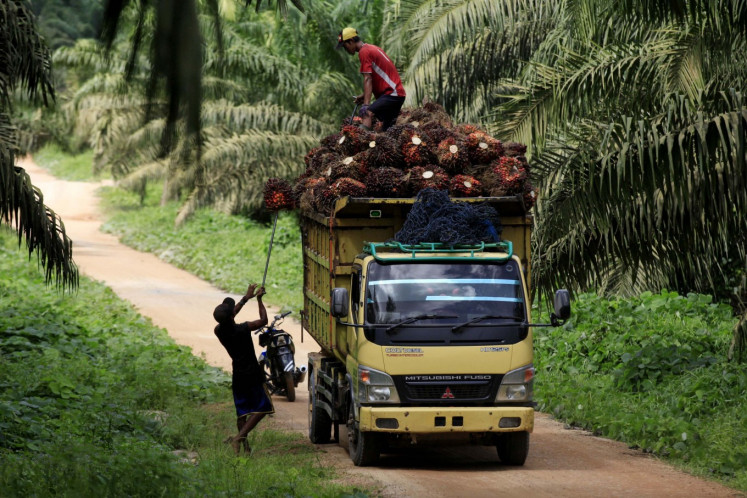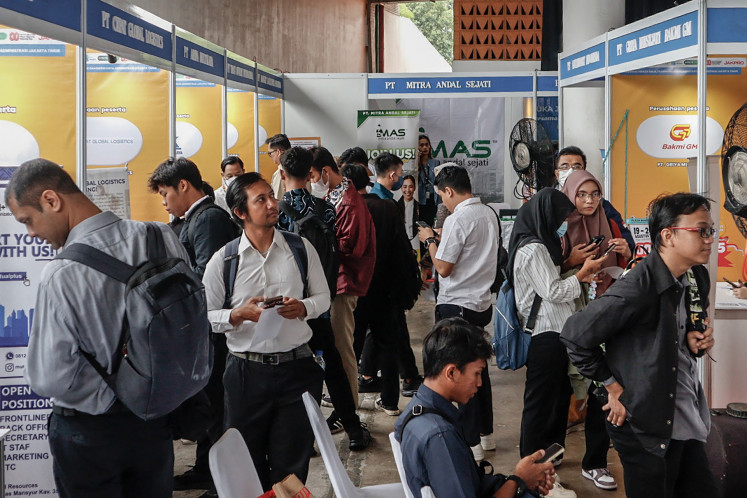Popular Reads
Top Results
Can't find what you're looking for?
View all search resultsPopular Reads
Top Results
Can't find what you're looking for?
View all search results'Lurik' hand weaving tradition dying
The tradition of hand-woven lurik fabric has apparently failed to regenerate, as all the weavers currently engaged in the craft in Klaten regency, Central Java, are aging and there is almost noone to continue the tradition
Change text size
Gift Premium Articles
to Anyone
T
he tradition of hand-woven lurik fabric has apparently failed to regenerate, as all the weavers currently engaged in the craft in Klaten regency, Central Java, are aging and there is almost noone to continue the tradition.
'None of the youngsters are willing to become lurik handloom weavers as they prefer to work in factories, or migrate to urban areas,' said lurik entrepreneur Sapto Aji from Pedan, Klaten, who makes the heritage hand-woven fabric along with four of his siblings.
Most of the handloom weavers working for him are over 70 years old. They have been working for 50 years in the lurik fabric business owned by Rachmat, Sapto's father, one of the few entrepreneurs still in the business.
The number will decline to a dozen as the planting season arrives, as most prefer to become farmhands during the period. As lurik weavers, they earn roughly Rp 7,000 (50 US cents) for every meter of the traditional textile they make. They can produce between eight and 10 meters of lurik daily if they work from morning until late afternoon.
Sapto, who once witnessed the glory days of lurik in the 1960s, had expressed concern over the state of the hand-woven craft that has weakened over time. From around 1,000 hand-woven lurik entrepreneurs in the 1960s, the number dropped to around 500 in 1965.
Currently, less than 50 lurik entrepreneurs are surviving,' Sapto estimated.
Apparently, not all of those 500 lurik entrepreneurs completely left the business, as some preferred to shift to modern weaving machines and others became sellers and stopped producing.
'However, their numbers were only a few,' said Sapto.
The presence of just a small number of lurik entrepreneurs was further worsened by the limited popularity of lurik, which was virtually unheard of. Buyers of the fabric did not always come every season.
'Poor marketing is apparently a dominant factor in the failure of weavers to survive,' said another lurik entrepreneur Arif Purnawan.
Arif is able to survive because he does not focus only on one type of woven fabric. He produces hand-woven lurik, but also every kind of woven fabric from across the country.
In 2012, the Klaten regent issued a decree requiring civil servants to wear lurik as uniform on Wednesdays and Thursdays, to the applause of handloom lurik weavers and entrepreneurs.
The regency administration, which has been declaring for the past several years that lurik is the icon of Klaten city, must prove its support with concrete action, such as promoting hand-woven lurik at least up to the provincial level and holding lurik exhibitions ' not just by building a statue of a lurik weaver at the entrance to the city and holding a parade once a year.
'So, when visitors come to Klaten, they will think of buying lurik as presents, like when visitors look for batik when they visit Surakarta,' Arif suggested.
Arif was also of the opinion that job training centers should provide lurik hand-weaving training as part of their skills training program as to save hand-woven lurik from extinction.










